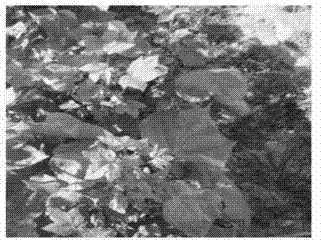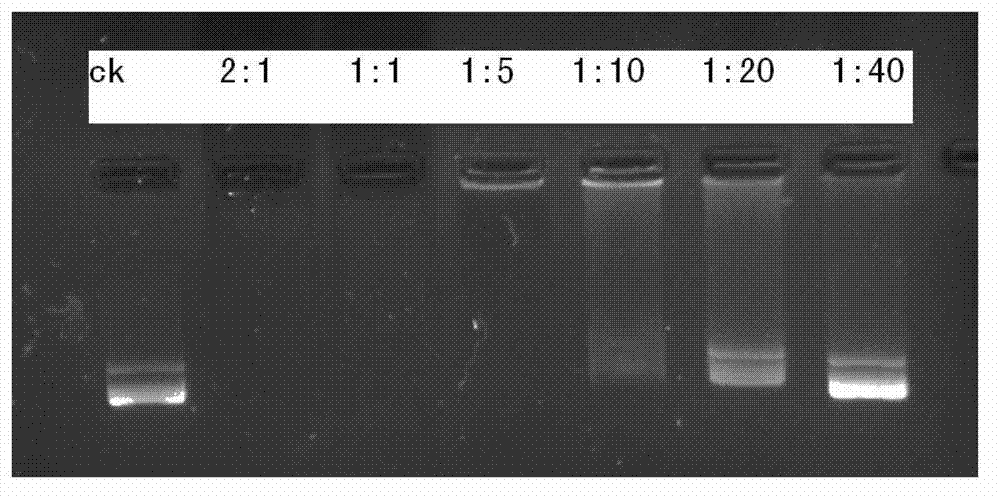Magnetic nanocarrier-mediated plant transgenic method
A magnetic nano-carrier and plant technology, which is applied in the field of nano-biotechnology and bio-nano materials, can solve the problems that no one has reported on plant pollen research, and achieve the effects of easy promotion, high permeability, and small cell damage
- Summary
- Abstract
- Description
- Claims
- Application Information
AI Technical Summary
Problems solved by technology
Method used
Image
Examples
Embodiment 1
[0028] Nano Fe 3 o 4 / PEI gene carrier-mediated double gene transformation of cotton pollen cells: the cotton insect-resistant plasmid (pGBIF4ABC-α, which contains the transformed Bt and Cpti fusion insect-resistant gene plant expression vector, kanamycin resistance marker) was linked to magnetic nanoparticles After transforming cotton, the specific steps are as follows. a: The recipient material was emasculated one day before flowering, and the stigma was covered with a thin tube for reproductive isolation to prevent other pollen contamination; b: The flowers that opened but did not loose pollen were picked on the same day, and the anthers were taken out; c: The plasmid pGBIF4ABC-α was mixed with nanocarriers Fe 3 o 4 / PEI connection at a mass ratio of 2:1, that is, each 50ul system contains 1ul (1ug / ul) magnetic nanoparticles and 2ug plasmid DNA, and connects at room temperature for 30min; d: Dilute the system in step c by 1000 times, and the Soak the anthers in it, proc...
Embodiment 2
[0031] Nano Fe 3 o 4 / PEI gene carrier mediated single gene transformation of cotton pollen cells: Cotton somatic embryo development-related genes (pK7G-HSERK, kanamycin resistance marker) were connected to magnetic nanoparticles to transform cotton, the transformation and genetic identification steps and implementation Steps a to i of Example 1 are the same. Figure 5 Gel electrophoresis images of nanocarrier / pK7G-HSERK complexes with different mass ratios are shown. The final statistics show that the conversion efficiency in this embodiment is 2%.
Embodiment 3
[0033] Nano Fe 3 o 4 / PEI gene vector mediated multi-gene artificial chromosome transformation of cotton pollen cells: Cotton genomic DNA bacterial artificial chromosome (BAC, containing chloramphenicol marker) was connected with magnetic nanoparticles to transform cotton, the transformation and genetic identification steps were the same as those in Example 1 a to i are the same; the difference is that in step c, BAC is connected to the nanocarrier at a mass ratio of 1:1. Image 6 Gel electrophoresis images of nanocarrier / BAC complexes with different mass ratios are shown. Finally, the conversion efficiency in this embodiment was calculated to be 10%.
PUM
 Login to View More
Login to View More Abstract
Description
Claims
Application Information
 Login to View More
Login to View More - Generate Ideas
- Intellectual Property
- Life Sciences
- Materials
- Tech Scout
- Unparalleled Data Quality
- Higher Quality Content
- 60% Fewer Hallucinations
Browse by: Latest US Patents, China's latest patents, Technical Efficacy Thesaurus, Application Domain, Technology Topic, Popular Technical Reports.
© 2025 PatSnap. All rights reserved.Legal|Privacy policy|Modern Slavery Act Transparency Statement|Sitemap|About US| Contact US: help@patsnap.com



